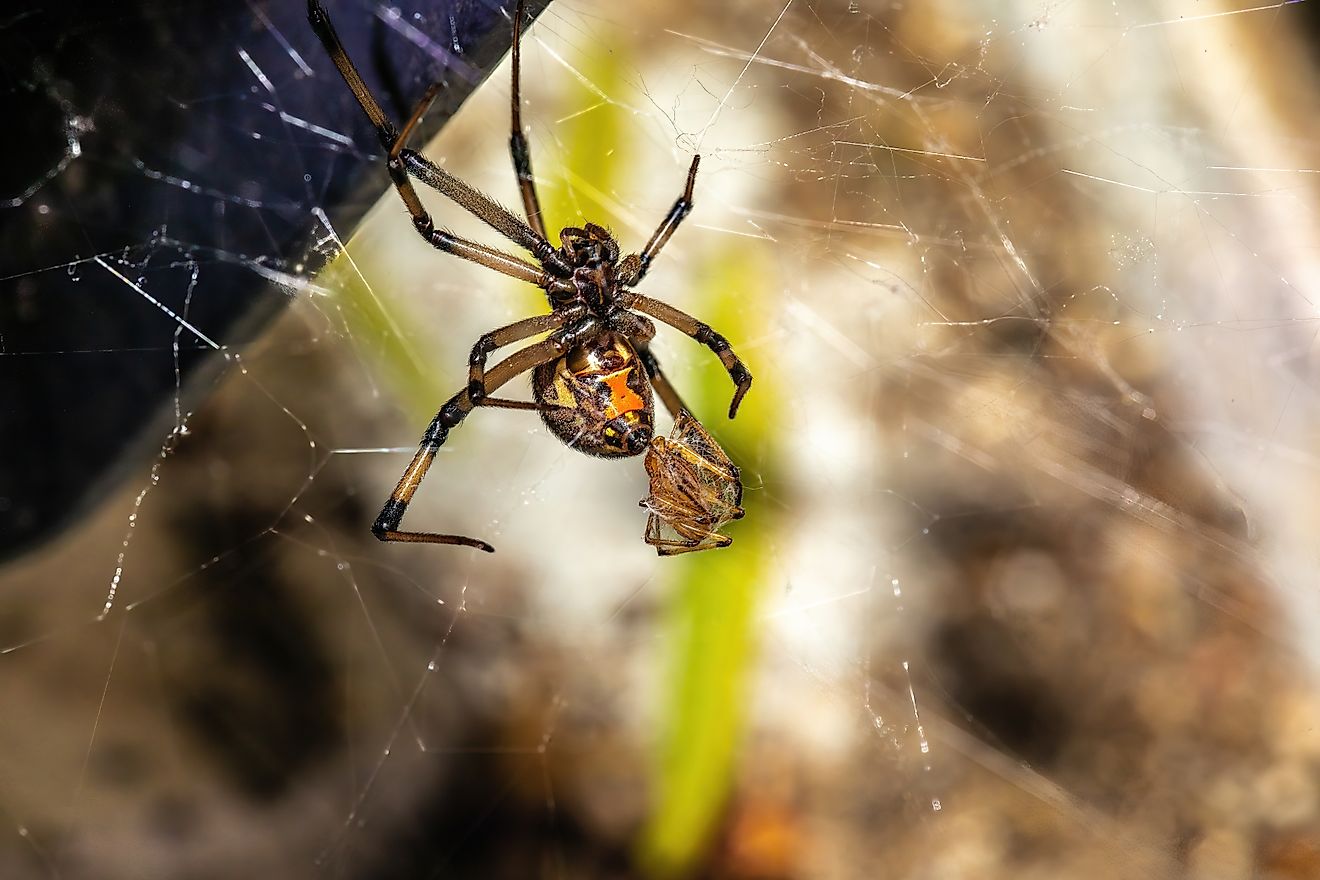
10 Animals That Are Omnivores
Omnivores are animals that include both plant and animal matter in their diet. Hence, they are often called "all-eaters." The term omnivore is derived from the Latin words "omni" and "vora" meaning "all" and "to consume." Omnivorous animals belong to different animal groups and may have special anatomical, physiological, and/or behavioral adaptations to cater to their omnivorous nature. Grizzly bears, red foxes, crows, squirrels, etc., are all examples of omnivorous animals. Even we humans are omnivores. Some omnivores and their dietary habits have been mentioned below:
- Chimpanzee
- Striped Skunk
- Red Fox
- Raccoon
- Greater spear-nosed bat
- Indian peafowl
- Wild boar
- Pied Crow
- Maned Wolf
- American Black Bear
Chimpanzee

A great ape species, the chimpanzee is an omnivore. It occurs in the forests and savannah of tropical Africa, where it lives in large groups of 15 to 150 members. While fruits are most preferred, chimps also eat other plant parts like leaves, stems, bark, resin, etc. They also supplement their diet with eggs, birds, insects, etc., and even hunt larger prey like red colobus monkeys, infant/juvenile bushbucks, warthogs, baboons, etc. However, animal parts make up only a small portion of the diet of these apes, with females consuming much lesser animal flesh than males.
Striped Skunk

This black-and-white striped animal is a perfect example of an omnivore, feeding primarily on insects in summer and small mammals, amphibians, fish, and bird eggs in winter while supplementing its diet with corn and nightshade fruits as well. Striped skunks are found throughout most of North America, from southern Canada to northern Mexico, occupying a variety of habitats like deserts, plains, woodlands, and even urban environments. They are known for spraying an offensive odor as a warning display when threatened.
Red Fox

A widely distributed species, the red fox is found across the world, from North America to northern Africa, Europe, temperate Asia, and even Australia, where they were introduced in the 19th century. They occur in a variety of habitats, from the Arctic tundra to deserts and urban systems. Just like their range and habitat, the diet of these foxes is also highly varied. They hunt mice, rabbits, birds, and other animals, feed on carrion and eggs, and even fruits, grains, garbage, and whatever food is available. These omnivorous animals are excellent opportunistic feeders.
Raccoon

The raccoon is a species native to North America but has also been introduced in other parts of the world, including several European and Asian countries. Raccoons are highly adaptable and hence, are found in a wide range of habitats, including human-dominated locations. They eat almost anything available, from fruits, seeds, and berries to small animals like rodents, insects, birds, fish, and eggs. Plant matter comprises a greater part of their diet, and they also search for food scraps in garbage dumps near human homes.
Greater Spear-nosed Bat

The greater spear-nosed bat, found in South and Central America, is also an omnivore. It lives in large groups of 10 to 100 individuals. It feeds on plant matter like fruits, nectar, seeds, pollen, etc., and also hunts insects and, occasionally, large animals like birds, rodents, and even other smaller bat species. These bats have a highly developed sense of smell and can even detect tiny pieces of banana among leaf litter on the forest floor.
Indian Peafowl

The Indian peafowl is native to the Indian subcontinent. It is a favorite bird of many, particularly because of the gorgeous appearance of the males of this species. These birds also have an omnivorous diet, feeding on seeds, fruits, grain, grass, bamboo shoots, and berries, as well as small mammals, snakes, lizards, frogs, insects, worms, etc. In agricultural areas, they also feed on food scraps around human habitations and crops like tomato, paddy, groundnut, etc.
Wild Boar

Wild boars have one of the most versatile diets among omnivores. They feed on roots, shoots, fruits, nuts, seeds, and a range of other plant matter. They also feed on a variety of insects, earthworms, fish, rodents, birds, reptiles, amphibians, and of course, carrion. These animals primarily forage for food on the ground or dig into the ground. Wild boars also eat tree bark and mushrooms when regular food becomes scarce. They are often labeled as vermin in agricultural areas as they raid crop fields and eat crops causing economic losses to the farmers.
Pied Crow

Like all crow species, the pied crow is also an omnivore. This species has a wide distribution in Africa. It often occurs in or near human-dominated landscapes. Pied crows live in pairs or small groups but gather in large numbers in areas with sufficient food availability. Its varied diet includes both plant matter and animals, ranging from insects to rodents and even fruit bats. These birds also feed on carrion and scraps in garbage dumps.
Maned Wolf

According to some studies, nearly 50% of the maned wolf's diet is plant matter. This species is found in South America's semi-open and open habitats, especially grasslands. Its diet includes a wide range of plant and animal matter. It feeds on sugarcane, fruits, roots, bulbs, etc., and helps in dispersing various seeds. The wolf apple is the most preferred fruit of this animal, and it feeds on this fruit throughout the year. Wolf apples can comprise around 40% to 90% of its diet. The maned wolf also hunts for prey like rodents, birds, fish, reptiles, etc. Its diet has been found to include as many as 178 species of animals and 116 plant species. Only 21% of attempted hunts of the maned wolf turn out to be successful, and it also supplements its diet by feeding on carrion.
American Black Bear

Found only in North America, this bear species is also omnivorous, with the diet varying with season and location. As the winter ends, and these bears emerge out of hibernation, they often feed on the carrion of animals that died during the winter. In spring, they feed on the young shoots and buds of new plants to build the muscle mass lost during the hibernating period. They also feed on roots, tubers, corms, etc., by digging into the ground. These bears also prefer insects, and the majority of their non-vegetarian diet is comprised of insects. They also also love honey and often ignore the honey bee stings to enjoy the sweet taste of honey. When human settlements are nearby, these bears often seek out refuse, bird feed, agricultural products, etc., found in such places. If the need arises, the black bears might also hunt and feed on prey like white-tailed deer fawns, moose, rodents, etc.
While all the above animals are omnivorous, the ratio of plant and animal matter they consume highly varies. However, their omnivorous nature is definitely a big help in times of food scarcity when these animals do not have the luxury of choice but need to feed on whatever is available. In this era of climate change and human-induced environmental degradation, many species with highly selective diets are threatened with extinction, while omnivores with a more versatile diet have better chances of adaptation.







